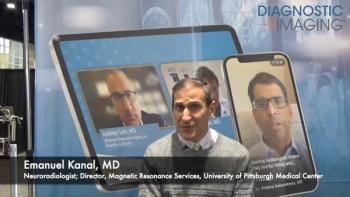
MRI Shows Traumatized Boys and Girls Have Structural Differences
MRI indicates that traumatized boys and girls may have differences in insula subdivision structure.
MRI shows structural differences in the insula between boys and girls who have been traumatized and have post-traumatic stress disorder (PTSD), according to a study published in
Researchers from Stanford University in California sought to examine if there were differences in the insula subdivision structure differences in youth with PTSD symptoms. The researchers performed MRI scans on 59 children and adolescents, aged 9 to 17. Thirty children had trauma symptoms (14 girls and 16 boys), and 29 were controls (15 girls and 14 boys). Five of the traumatized subjects had experienced one episode of trauma. The remaining 25 had experienced two or more episodes or had been exposed to chronic trauma.
The researchers measured insula structure (volume, surface area, and thickness) using structural MRI (sMRI) and calculated using Freesurfer software.
The results showed that there were no differences in the insula among the boys and girls who were not traumatized, but boys with PTSD symptoms demonstrated larger volume and surface area than control boys, while girls with PTSD symptoms demonstrated smaller volume and surface area than control girls.[[{"type":"media","view_mode":"media_crop","fid":"54169","attributes":{"alt":"Victor Carrion, MD","class":"media-image media-image-right","id":"media_crop_5369443109691","media_crop_h":"0","media_crop_image_style":"-1","media_crop_instance":"6778","media_crop_rotate":"0","media_crop_scale_h":"0","media_crop_scale_w":"0","media_crop_w":"0","media_crop_x":"0","media_crop_y":"0","style":"height: 170px; width: 170px; border-width: 0px; border-style: solid; margin: 1px; float: right;","title":"Victor Carrion, MD","typeof":"foaf:Image"}}]]
"The insula appears to play a key role in the development of PTSD," study senior author Victor Carrion, MD, a professor of psychiatry and behavioral sciences at Stanford, said in a release. "The difference we saw between the brains of boys and girls who have experienced psychological trauma is important because it may help explain differences in trauma symptoms between sexes."
"It is important that people who work with traumatized youth consider the sex differences," lead author Megan Klabunde, PhD, an instructor of psychiatry and behavioral sciences, said in the same release. "Our findings suggest it is possible that boys and girls could exhibit different trauma symptoms and that they might benefit from different approaches to treatment."
Newsletter
Stay at the forefront of radiology with the Diagnostic Imaging newsletter, delivering the latest news, clinical insights, and imaging advancements for today’s radiologists.




























